Recent Publications
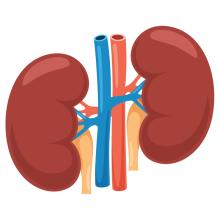
Maamoun Basheer, Elias Saad, Nimer Assy: Pulmonary Embolism in Autosomal Dominant Polycystic Kidney Patient Induced by Inferior Vena Cava Mechanical Compression (Eur J Case Rep Intern Med .)
Autosomal dominant polycystic kidney disease is a common syndrome. Renal and hepatic cysts can cause discomfort, bleeding, rupture, infection, hypertension and a mass effect with compression of adjacent organs.
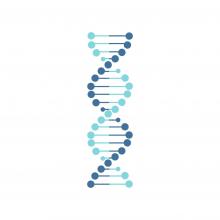
Computational analysis of sense-antisense chimeric transcripts reveals their potential regulatory features and the landscape of expression in human cells (NAR Genom Bioinform . )
Many human genes are transcribed from both strands and produce sense-antisense gene pairs. Sense-antisense (SAS) chimeric transcripts are produced upon the coalescing of exons/introns from both sense and antisense transcripts of the same gene. SAS chimera was first reported in prostate cancer cells. Subsequently, numerous SAS chimeras have been reported in the ChiTaRS-2.1 database. However, the landscape of their expression in human cells and functional aspects are still unknown. We found that longer palindromic sequences are a unique feature of SAS chimeras. (Sumit Mukherjee, Rajesh Detroja, Deepak Balamurali, Alessandro Gorohovski, Milana Frenkel-Morgenstern)
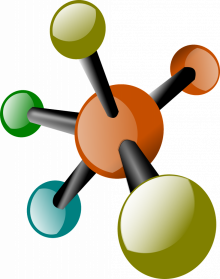
Nikola Lukic, Stefanie Lapetina, Kolluru D Srikanth, Shams Twafra, Jonathan Solomon, Tal Sneh, Michal Gendler, Hava Gil-Henn: Pyk2 regulates cell-edge protrusion dynamics by interacting with Crk (Mol Biol Cell . )
Focal adhesion kinase (FAK) is well established as a regulator of cell migration, but whether and how the closely related proline-rich tyrosine kinase 2 (Pyk2) regulates fibroblast motility is still under debate. Using mouse embryonic fibroblasts (MEFs) from Pyk2-/- mice, we show here, for the first time, that lack of Pyk2 significantly impairs both random and directed fibroblast motility.
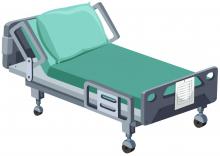
Khalaf Kridin: Assessment of Treatment Approaches and Outcomes in Stevens-Johnson Syndrome and Toxic Epidermal Necrolysis: Insights From a Pan-European Multicenter Study (JAMA Dermatol . )
Stevens-Johnson syndrome (SJS) and toxic epidermal necrolysis (TEN) are severe drug reactions associated with a high rate of mortality and morbidity. There is no consensus on the treatment strategy.
Objective: To explore treatment approaches across Europe and outcomes associated with the SJS/TEN disease course, as well as risk factors and culprit drugs.
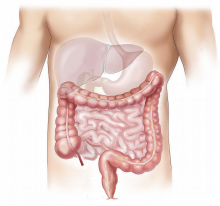
Amir Mari, Tawifik Khoury: The Inflammatory Bowel Disease Disk Application: A Platform to Assess Patients Priorities and Expectations from Treatment (J Dig Dis)
Inflammatory bowel disease significantly impacts patient's well-being. Patients' preferences regarding treatment outcomes do not necessarily fit physicians' goals. We aimed to examine patient's priorities and expectations from treatment.

Rela Oved, Gavi Jankelowitz, Sondra Turjeman, Omry Koren: Molecular genetics for probiotic engineering: dissecting lactic acid bacteria (Trends Microbiol . )
The composition of the gut microbiome is greatly influenced by nutrition and dietary alterations which can also induce large temporary microbial shifts. However, the molecular mechanisms that promote these changes remain to be determined. Species of the family Lactobacillaceae and Bacillus species are genetically manipulatable bacteria that are naturally found in the human gastrointestinal (GI) tract and are often considered models of beneficial microbiota. Here, we identify specific conserved molecular pathways that play a key role in host colonization by beneficial members of the microbiota.

Offir Ertracht, Tal Reuveni, Shaul Atar: Vasodilation and blood pressure-lowering effect mediated by 5,6-EEQ lactone in 5/6 nephrectomy hypertensive rats (Biochim Biophys Acta Mol Cell Biol Lipids .)
Microvascular dysfunction is a key contributor to vascular hypertension, one of the most common chronic diseases in the world. Microvascular dysfunction leads to the loss of nitric oxide-mediated endothelial dilation and the subsequent compensatory function of endothelium-derived hyperpolarizing (EDH) factors in the regulation of vascular tone. Previously, we showed that lactone metabolite derived from arachidonic acid induces endothelial-dependent vasodilation in isolated human microvessels. Based on structural similarities, we hypothesize that additional lactone metabolites formed from eicosapentaenoic fatty acid (EPA) may bear EDH properties.
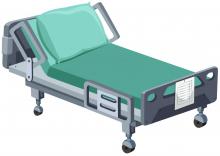
Wisam Sbeit, Anas Kadah, Amir Shahin, Samer Shbat, Moeen Sbeit, Tawfik Khoury: Scheduled percutaneous endoscopic gastrostomy tube replacement did not reduce PEG-related complications (Scand J Gastroenterol .)
Percutaneous endoscopic gastrostomy (PEG) tube insertion is used for enteral nutrition. Each manufacturer has its own instructions for planned tube replacement. Accordingly, caregivers have adopted the policy of elective change at a fixed period of time (3-6 months). The current study aimed to assess whether retained PEG for more than 6 months was associated with a higher rate of PEG-related complications.

Mary C J Rudolf: Between-country analysis of implementing an obesity prevention intervention using RE-AIM: HENRY in Israel and UK (Health Promot Int .)
Health Exercise Nutrition for the Really Young (HENRY) is a UK community-based early childhood obesity prevention intervention that was adopted and implemented in Israel between 2013 and 2018. The aim of this study was to explore the implementation process in Israel and compare it with that of the 'parent' programme in the UK, in order to throw light on the challenges of introducing complex interventions into different countries and cultures.
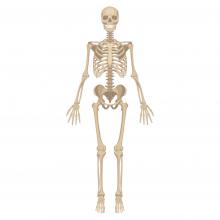
Khalaf Kridin, Eran Shavit: Hidradenitis suppurativa and rheumatoid arthritis: evaluating the bidirectional association (Immunol Res .)
Despite some common pathogenic themes, the association of hidradenitis suppurativa (HS) and rheumatoid arthritis (RA) has been poorly investigated. We aimed to evaluate the bidirectional association between HS and RA.

Maamoun Basheer, Elias Saad, Hagai Rechnitzer, Simona Zisman-Rozen, David Azoulay, Nimer Assy: Clearance of the SARS-CoV-2 Virus in an Immunocompromised Patient Mediated by Convalescent Plasma without B-Cell Recovery (Int J Mol Sci .)
This case report presents a patient who had difficulty eradicating the corona virus due to being treated with Rituximab, which depletes B lymphocyte cells and therefore disables the production of neutralizing antibodies.

Nagib Dally, Celia Suriu, Andrei Braester, Shay Yeganeh: COVID-19 among patients with hematological malignancies: a national Israeli retrospective analysis with special emphasis on treatment and outcome (Leuk Lymphoma .)
This national Israeli multicenter retrospective study aimed to characterize the clinical course of COVID-19 infection among patients with hematological malignancies, with special emphasis on treatment efficacy and outcome.
Ariela Goldenshluger, Nasser Sakran: Weight Loss Outcomes and Lifestyle Patterns Following Sleeve Gastrectomy: an 8-Year Retrospective Study of 212 Patients (Obes Surg . )
Sleeve gastrectomy (SG) is an effective treatment for extreme obesity; however, long-term weight loss outcomes remain largely understudied. We aimed to examine the long-term weight changes following SG and patient characteristics and lifestyle patterns related to weight loss outcomes.
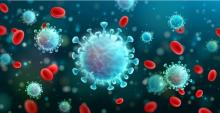
SARS-CoV-2 Immunogenicity in individuals infected before and after COVID-19 vaccination: Israel, January-March 2021 (Epidemiol Infect . )
We serially measured anti-spike IgG response in a cohort of vaccinated healthcare workers according to SARS-CoV2 infection status (never infected or infected before or after vaccination) in order to inform vaccination policy.
(Kamal Abu Jabal, Hila Ben-Amram, Karine Beiruti, Ira Brimat, Ashraf Abu Saada, Younes Bathish, Christian Sussan, Salman Zarka, Michael Edelstein)
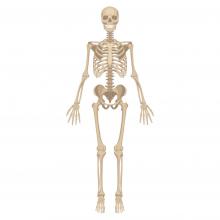
Milana Frenkel Morgenstern, David Karasik: The "GEnomics of Musculo Skeletal Traits TranslatiOnal NEtwork": Origins, Rationale, Organization, and Prospects (Front Endocrinol (Lausanne) .)
Musculoskeletal research has been enriched in the past ten years with a great wealth of new discoveries arising from genome wide association studies (GWAS). In addition to the novel factors identified by GWAS, the advent of whole-genome and whole-exome sequencing efforts in family based studies has also identified new genes and pathways. However, the function and the mechanisms by which such genes influence clinical traits remain largely unknown. There is imperative need to bring multidisciplinary expertise together that will allow translating these genomic discoveries into useful clinical applications with the potential of improving patient care. Therefore "GEnomics of MusculoSkeletal traits TranslatiOnal NEtwork" (GEMSTONE) aims to set the ground for the: 1) functional characterization of discovered genes and pathways; 2) understanding of the correspondence between molecular and clinical assessments; and 3) implementation of novel methodological approaches.




